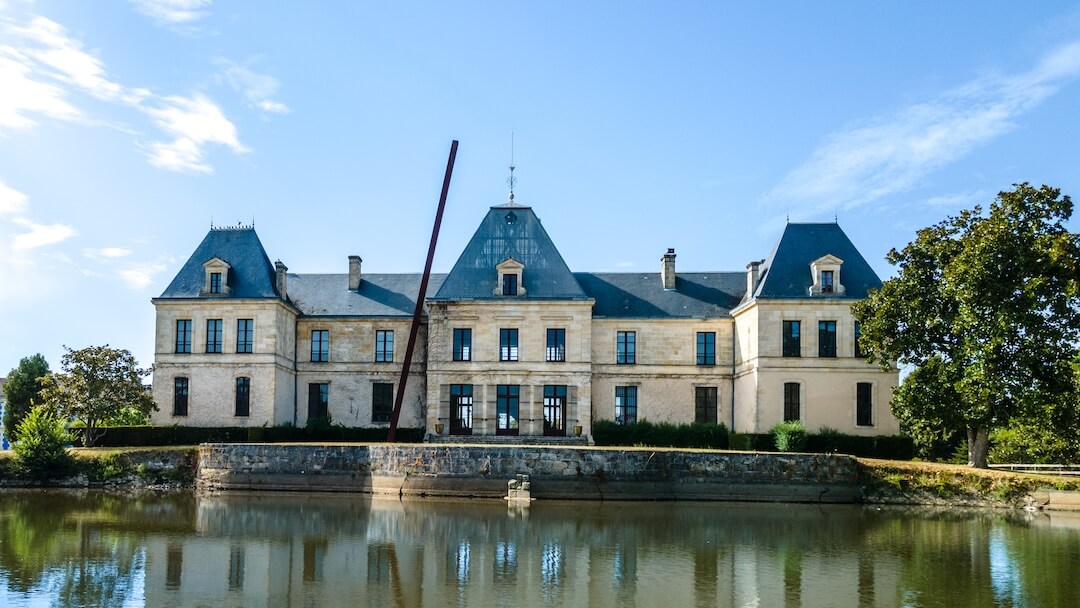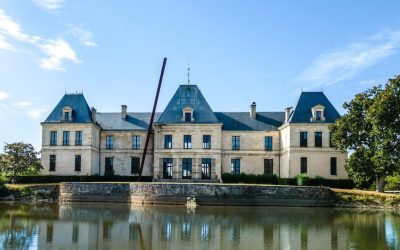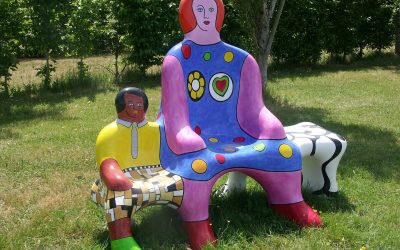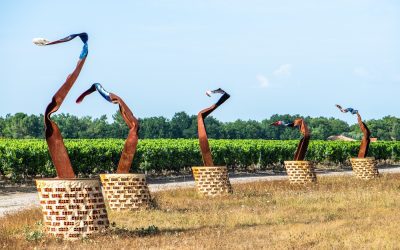Imagine a stroll among the rows of vines, where each step leads you to contemplate the beauty of the landscape and encounter artworks that question, amaze, and inspire. Here, wine is not just for drinking: it is viewed, contemplated, and felt as a work of art.
At Château d’Arsac, contemporary art doesn’t just decorate the place: it is its DNA, its vibrant soul. For decades, the estate has fostered a living dialogue between wine culture and artistic culture, between the timelessness of the vine and the immediacy of creation. It is this sensitive, poetic, and embodied connection that we invite you to explore.
Portraits of Arsac Artists: when Artworks Tell the Story of the Place
Since the 1990s, Château d’Arsac has welcomed major artists to its park, transforming the estate into an open-air museum. Each artwork has been chosen or commissioned in direct connection with the spirit of the place, the geography of Médoc, and the intimacy of wine.
Today, the park houses over 20 contemporary artworks, featuring prestigious names such as Bernar Venet, Niki de Saint Phalle, Richard Texier, Jean-Michel Folon, and Philippe Starck…
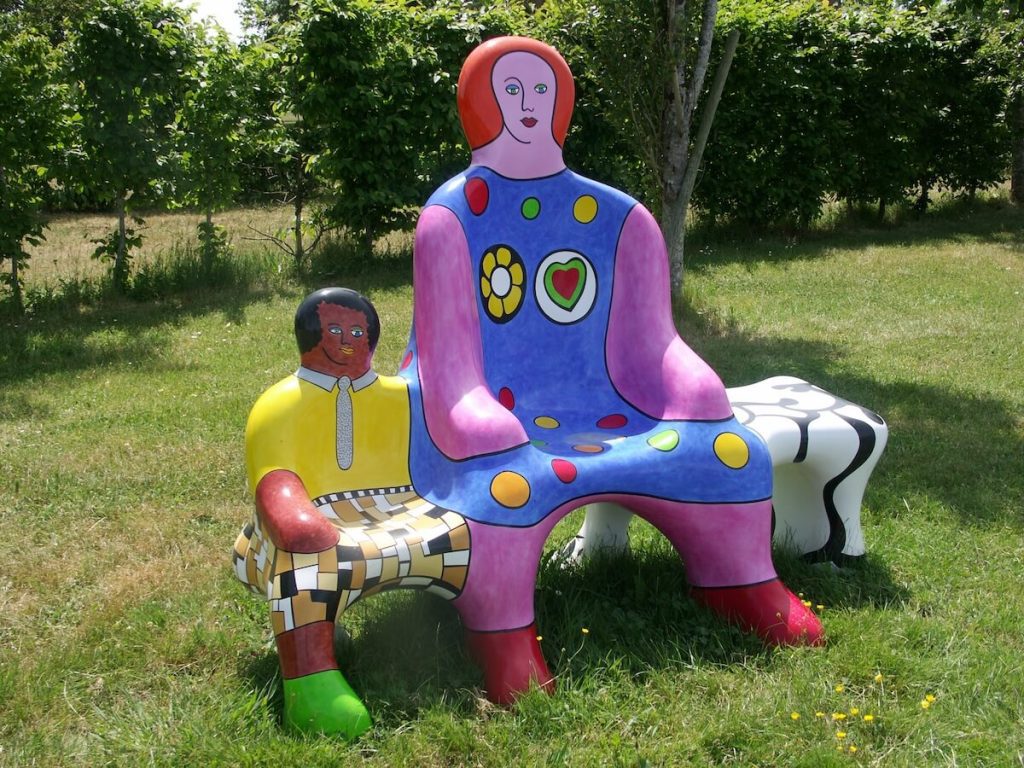
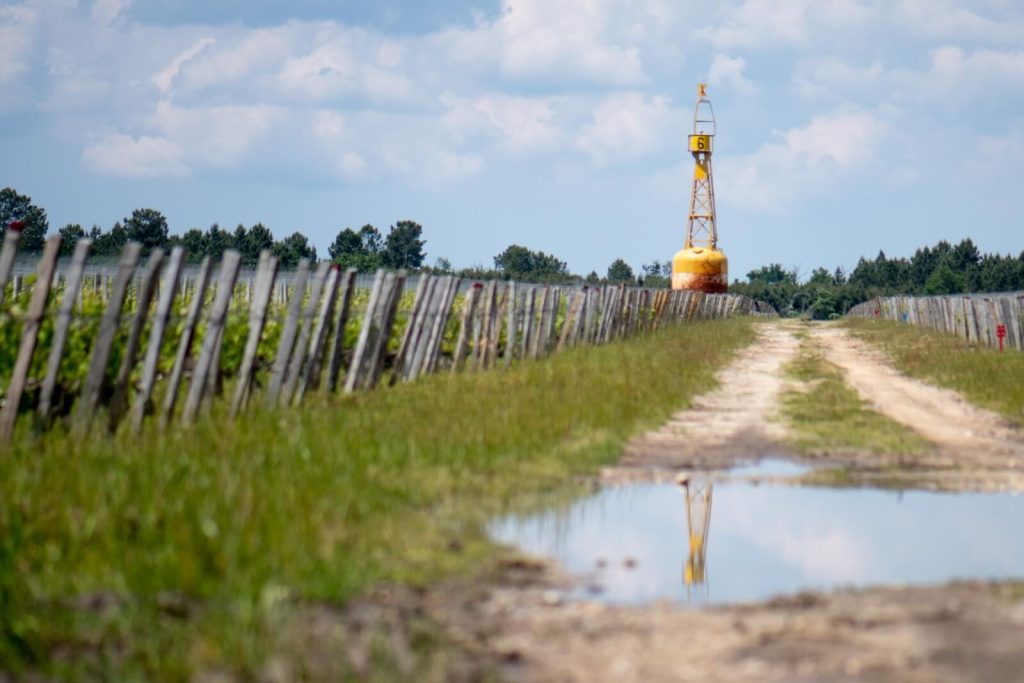
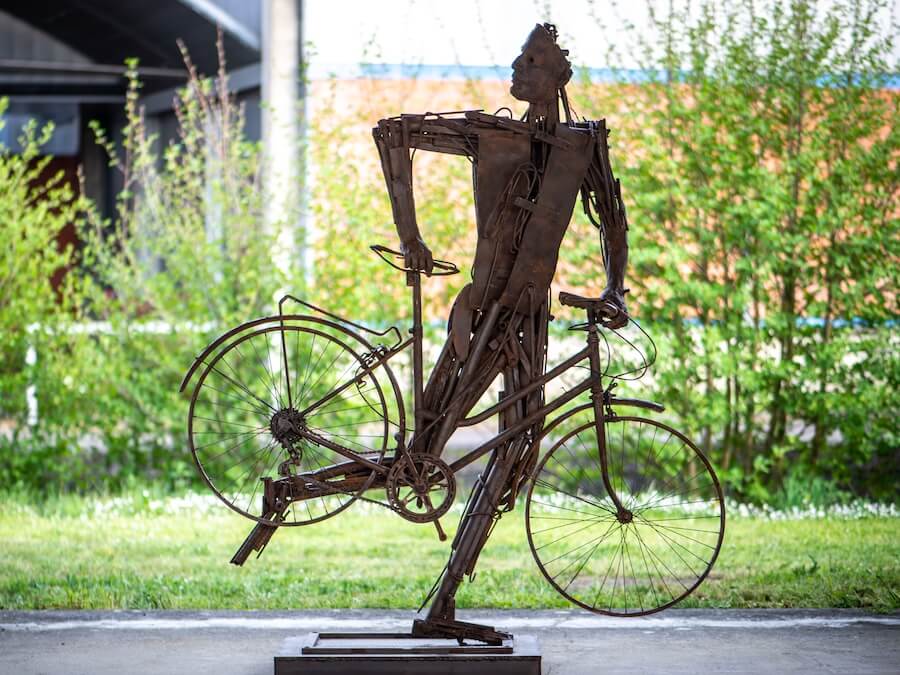
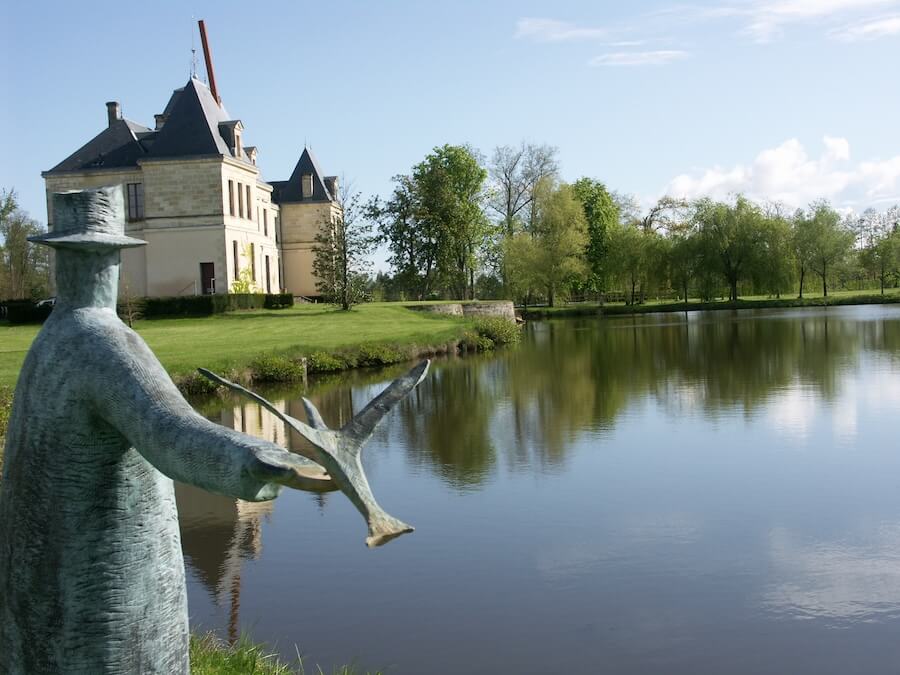
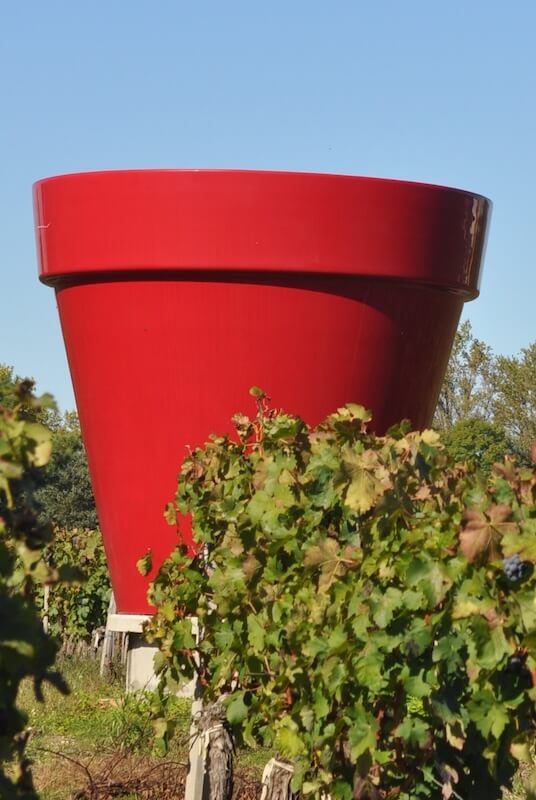
Each artwork, carefully positioned within the landscape, resonates with the surrounding nature, climate, light, and vines. It’s a way to anchor art in the living world, to make it dialogue with the long history of viticulture.
Artistic Stroll through the Estate: Walk, See, Smell, Taste Arsac
What if the vineyard became a living museum, where every step triggers an emotion, a reflection, an awakening of the senses? At Arsac, a stroll is not just a leisure activity; it’s a multisensory experience, an immersion in a place where art and nature converse at every moment.
🌿 Walk
Among the perfectly aligned rows of vines, visitors wander as if in a labyrinth of stories. At each turn, a monumental sculpture emerges from the landscape. The path is punctuated by the vegetative cycle of the vine and the fixed time of the artworks, like an interplay of echoes between the living and the static, the moving and the permanent.
Walking at Arsac means slowing down, reconnecting with the rhythm of nature and the fertile silence of contemplation.
👁 See
The artworks change with the light, the seasons, and the time of day. Metal glows in the sun, colors blend into the foliage, geometric shapes contrast with the organic nature of the vineyard. Here, seeing means learning to look differently.
The same Arman artwork tells a different story at sunrise, in the rain, or in the morning mist of September.
👃 Smell
The experience wouldn’t be complete without the scents of the estate: the morning humidity of the soil, the vegetal fragrance of the flowering vines, the warmth of the earth in summer, the power of oak in the cellars. The air of Arsac is filled with invisible stories that the nose can read before words.
Every breath contains a fragment of vintage, a hint of terroir.
👄 Taste
The stroll extends into the glass, like a resonance of everything just experienced. The estate’s wine is the liquid translation of the landscape, an art form in itself. It offers itself as a natural extension of the visit: a sip of landscape, a caudalie of memory.
Thematic Routes: Strolling with a Guiding Thread
To enhance this experience, artistic and sensory itineraries will soon be offered to visitors. Each route offers a sensitive interpretation of the estate, a way to explore Arsac with fresh eyes.
🔩 Route “Materials and Metals”
Artists: Bernar Venet, Arman, César
This route features the estate’s most raw, industrial, powerful artworks. Metal, tension, weight, shadow, and light interact with the gnarled vines and the rigor of the rows.
🧴 Suggested pairing: a taut, mineral, crystalline white. A wine that cuts like steel but vibrates like light on a Venet sculpture.
🌀 Route “Figures and Symbols”
Artists: Niki de Saint Phalle, Jean-Michel Folon
A more dreamlike and narrative itinerary, populated by soft forms, poetic characters, and stories halfway between dream and fable. This route invites wonder and introspection.
🍷 Suggested pairing: a supple, silky, enveloping red. A wine that evokes the sweetness of a memory, the caress of a familiar voice.
🌱 Route “Art & Vine”
Installations integrated into the landscape
Some artworks directly dialogue with the vine, the seasons, the elements. They blend into the living world, becoming its interpreters. This route highlights Arsac’s ecosystem, its raw material, its breath.
🥂 Suggested pairing: a natural wine, or one aged in amphora, with frank and vibrant aromas. A wine that breathes humus, pulp, the freshness of vegetation.
A Tasting Guided by Emotion
Each stroll can conclude (or begin) with a guided, commented, sensory tasting, where we discuss not only grape varietals or aging, but also feelings, visual impressions, and artistic correspondence.
Why does a wine recall a sculpture? Why does a metallic artwork evoke a chiseled wine?
At Arsac, these unexpected connections become possible, because wine and art share the same language: that of emotion conveyed through matter.
When Art Dialogues with Wine: the Aesthetics of Taste and the Taste for Aesthetics
Wine and art do not belong to the same disciplines, but they share a language: emotion, nuance, a sense of time, the creative gesture.
🎨 the Label as Artwork
At Arsac, some vintages feature artist labels: bottles that have become collector’s items, where l “visual artwork meets the sensory message of the wine. The” label then becomes an aesthetic gateway to the tasting experience.
🤝 Collaborations and Residencies
Numerous artistic residencies take place each year at Arsac, allowing creators to immerse themselves in the estate, experience the vineyard, and work with materials in connection with nature.
💡 Oenological Aesthetics = Artistic Aesthetics?
A wine can be:
- Structured, balanced, taut, open: all terms that could apply to a painting or an installation.
- Contemplative, narrative, intuitive: like an artwork, a wine can tell a story.
When we speak of wine in terms of texture, light, and form, we understand that the oenological experience has an aesthetic depth comparable to that of an artistic experience.
Art and wine share the same purpose: to make us see, feel, and remember. One works with light, the other with fruit. Both are made of living matter, but seek to capture its fleeting brilliance, to reveal its essence.
At Château d’Arsac, art is not merely decoration: it is a means of expressing the land, an extension of the terroir into the imagination. It invites you to taste differently: with your eyes, your heart, and all your senses awakened.
To go a little further, discover:
- Bernar Venet
- Niki de Saint Phalle
- Bernard Pagès
- Rotraut Klein-Moquay
- Jean-Michel Meurice
- Susumu Shingu
- Romain Barelier
- Gilles Sarthou
- Sam Dougados
- Jean-Michel Folon


